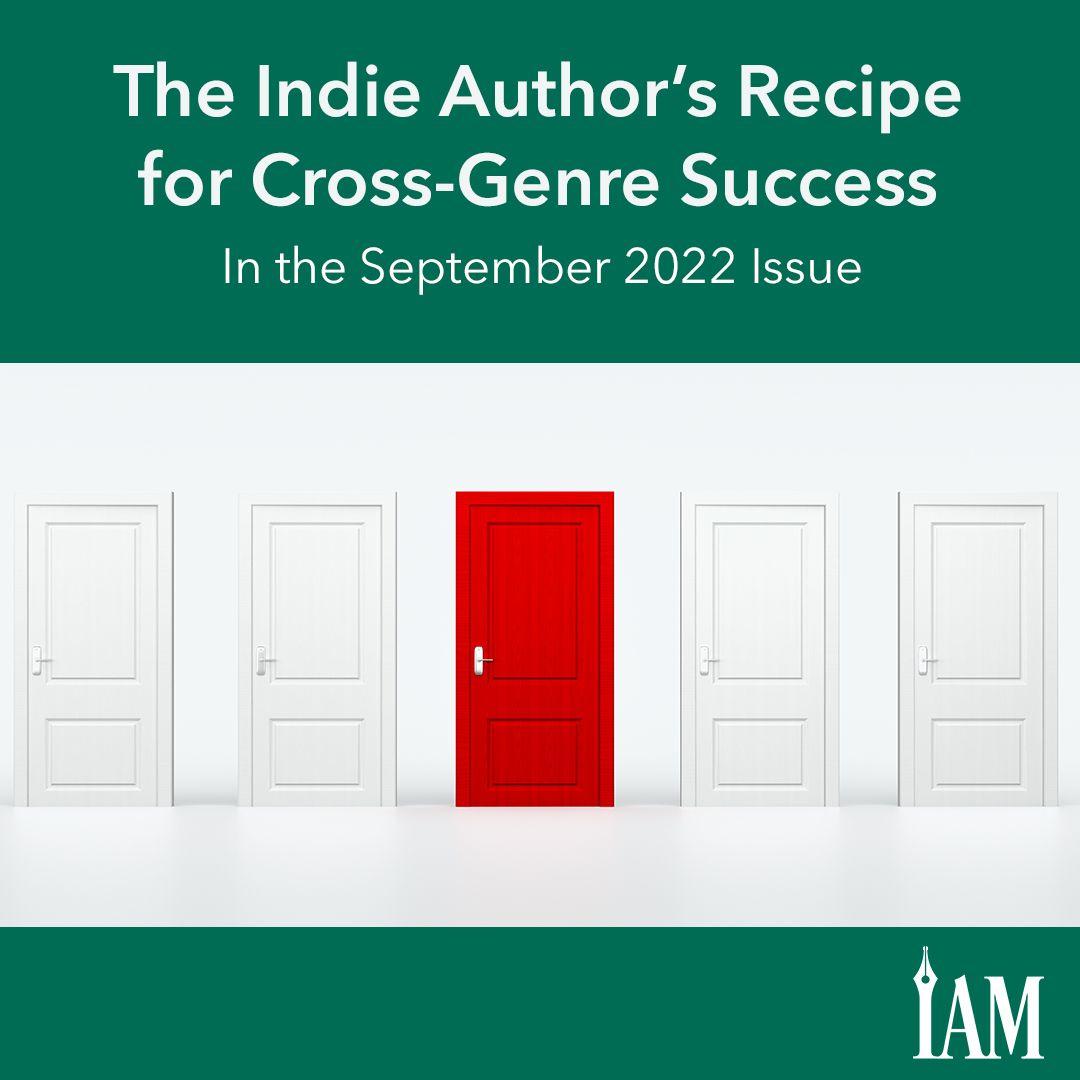Megan Linski-Fox
You’ve committed what is considered the grave sin of indie publishing—you’ve written a book that doesn’t cleanly fit into any specific genre or category. Hosts of fellow writers would tell you to immediately abandon the project because attempting to market or, heaven forbid, sell a novel with no easily identifiable audience is doomed to fail in the current write-to-market atmosphere.
But a cross-genre book doesn’t need to spell the death of your writing career. You can sell that ugly duckling and possibly turn it into a swan that’ll deliver a host of new fans and meet sales goals. Will it be more difficult than selling a highly packaged piece of genre fiction? Perhaps, but why did we become indie authors if not to embrace challenges and explore new frontiers?
Step 1: Understand Craft
When writing cross-genre fiction, though the idea may be unique, the aspects of crafting story remain the same.
Joseph Lallo is a full-time author and a co-host of the podcast, Six Figure Authors. He has made a career out of writing cross-genre series, most particularly his Book of Deacon series, a High Fantasy saga that features Sci-Fi elements due to the advanced technical magic system within the books. His other works include the Free-Wrench series, which he describes as Steampunk with Fantasy elements.
“Every genre is defined by a handful of things. A book becomes cross-genre when you combine the rules of two different genres,” Lallo says. “Look at the elements of genre that are going to work best for your story. Establish the rules and start defining your system. You want the story to make sense and be consistent. The rules of writing and creating a book do not change.”
A strong plot and compelling characters can make or break a cross-genre series. In order to achieve a truly marketable product, you must have both, no matter what genre you’re writing.
“You have to have the fundamentals in place,” Lallo says. “Readers want something that’s familiar to them. The novelty of a book can be super interesting, but what gets people to finish a book and read the next one is how good the book is, not how good the idea is.”
Step 2: Pick a Lane
All cross-genre books have to start somewhere, and that means determining exactly what your book is, even if it turns out to be a mishmash of everything. To market correctly, you must analyze which genre your book is closest to.
“Look at the category the book leans stronger toward and the broadest category with the readers who will accept the most variation,” Lallo says.
Take, for example, a Historical Fantasy with Dystopian elements and a bit of Romance thrown in. At first glance, this book could fit into a number of categories. But upon analysis, the Historical Fantasy aspect might make up around 70 percent of the book while the Dystopian parts make up about 20 percent and the Romance only 10 percent. In this case, you would market the book as a Historical Fantasy and label the other two categories as subgenres.
Assigning your book a subgenre, or a secondary category, can serve as an alternate way of marketing to a different audience. In this way, you’re demonstrating to your audience that you primarily see your work as a Historical Fantasy, but readers who enjoy Historical Fantasy along with Dystopian and Romance will find it entertaining. The idea is to market toward one overall audience segment, then find readers who would also enjoy the subgenres in the book, instead of working the other way around.
Beta readers can be highly helpful in this regard. Ask a group of readers to read the novel before publication and fill out a questionnaire once they’ve completed the novel to help you categorize your book correctly. Include questions like:
- If you had to put this book into one category at the bookstore, what category would that be?
- If you couldn’t put this book into the category you mentioned above, what other section would you expect to find it in?
- What is the first word that pops into your head when asked what this novel is about?
- If you had to compare this book to one or two other titles that you already know about, what would you say it is similar to?
- If you were recommending this book to a friend, how would you describe the plot and/or characters in a few sentences?
Step 3: Nail Your Packaging
Branding a cross-genre book is of exceptional importance, as it gives readers expectations on the kind of reading experience they’ll have while enjoying your book. Because of this, the cover art and marketing copy—the reader’s first connection with your book—must be on point in order to make the novel an easier sell.
“Find the closest genre to your book that people understand,” Lallo says. The blurb and cover need to be solid so people can make an educated decision.”
Step 4: Experiment with Marketing Strategies
At its forefront, marketing a cross-genre book should be a simple matter, much like the marketing of an on-genre product.
“The less you have to educate your reader during the marketing process, the better,” Lallo says. “Market the book as one genre with elements of another genre. Don’t make your readers solve a puzzle, trying to figure out what the book is.”
When considering advertising, such as social media ads or newsletter marketing, Lallo says it’s important to first understand the audience for your ads—the website users, their ages, and their buying habits. Still, one marketing strategy stands true overall.
“Return on word-of-mouth is through the roof. Make people aware, through back matter or social media, if they like the book to tell their friends, and that this is one way they can help the author,” Lallo says.
The best tactic an author can use to promote their work, however, is by showing the world just how much passion they have for the project itself.
“If you’re writing cross-genre, it’s because you really want to. You’re enthusiastic about it, so that enthusiasm comes through,” Lallo says. “You can make up for other shortcomings by … being abundantly clear on the page that you had a blast writing it.”
Step 5: Take the Risk
At first glance, Sci-Fi and Westerns seem like two genres that wouldn’t go well together. They’re entirely different concepts. Yet Space Westerns have become a genre in their own right, hallmarked by stories such as Star Trek, Firefly, and Star Wars.
The idea is so profitable that Disney has built an entire theme park around the concept. But for this to happen, someone had to step out and take the risk—and that individual was C.L. Moore, one of the first creators of a Space Western hero. Moore’s character in Northwest Smith made his debut in the 1930s, but it took nearly ninety years from the conception of the idea for Space Westerns to grow to the popularity they enjoy today.
It’s completely possible you could write the first book in a brand-new genre and be the founder of a category people didn’t even know they wanted. Lallo wants authors to know that if this is your true desire, it is no small undertaking.
“Creating a new niche is like creating a new language,” Lallo says. “You have to fully define everything about your story. Everything has to be laid out for the reader.”
Overall, writing cross-genre can be an adventure in itself. Despite the challenges writing cross-genre provides, Lallo wouldn’t have it any other way. “Writing cross-genre can be an uphill battle, but you’re putting out something unique, and that’s why we started writing. It keeps you enthusiastic and keeps your mind on fresh ground. It’s a rewarding path through the publishing world.”










